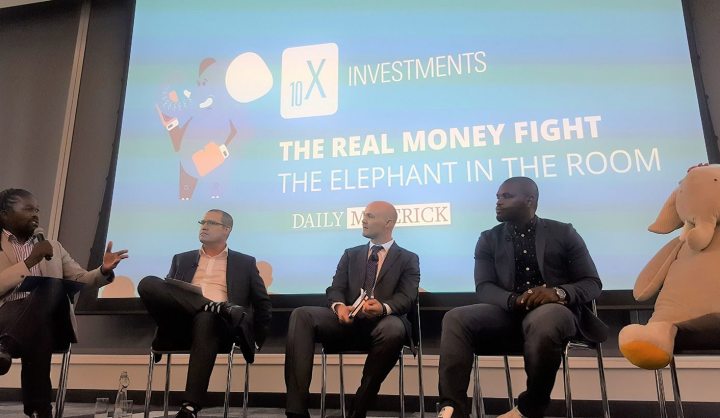SPONSORED CONTENT
Once you have buried the losers, everyone looks like a winner

Informed individuals can protect themselves from unscrupulous behaviour. In an industry famous for huge promises on a large, confusing array of products, most of which disappoint, 10X uses a simple, proven strategy to give independent and institutional investors the best possible chance of reaching their retirement investment goal. By STAFF REPORTER.
The disappearance of funds, one way of burying poor past returns, is one of the investment industry’s “elephants in the room”, says Steven Nathan, 10X Investments CEO.
The disruptive asset manager is shining a spotlight on this and other self-serving investment practices that benefit service providers at the expense of their clients.
Foul play, cry some! (industry players); Not fair, cry others (with vested interests). But let’s let the facts speak for themselves, says Nathan, who adds that informed individuals can protect themselves from unscrupulous behaviour.
Asset managers tend to offer a range of funds. A few do well and attain flagship status; others perform poorly and settle at the wrong end of the rating table.
It makes no business sense to keep these going, yet simply closing them down comes with reputational risk. So, the underlying investors are transferred to a more “appropriate” fund and assume that fund’s track record. Problem solved, plus the manager gets to retain the assets and fee income before the remaining clients join the rush for the exit.
In a rare mea culpa, Stanlib recently announced it would close 15 unit trust funds because its range was “too complex” and no longer appropriate. South Africa’s third-largest asset manager hopes to curtail duplication in its multi-asset funds and consolidate funds in the same category. So, for example, individual funds targeting financial, resource, industrials and value stocks will amalgamate into its SA Equity fund.
While a large-scale consolidation of this nature is unusual, the concept is not. The investment industry regularly launches and closes funds.
Sometimes it’s asset managers themselves that vanish, usually by merging with other players. Older readers may recall industry “stalwarts” that have gone missing in action over the past 20 years – former household names such as Alliance Capital, BOE, Fedam, Fedsure, Fraters, Gensec, Libam, Real Africa, RMB Asset Management, Metropolitan, SCMB and Southern Life, to name just a few of the larger ones.
This is the industry’s way of losing its black sheep. Like those awful relatives who fall from grace, these embarrassing funds are merely taken off the mantel shelf.
Most eventually merge into other funds with a more respectable track record. People who were invested in the under-performing funds lose sight of their historic returns and are instead presented with the more palatable performance of their new fund, most of them soon forgetting they did not actually share in those returns. From that perspective, inattentive investors are a gift to the industry.
More importantly, though, removing the laggards improves the average return of the remaining funds. This “survivorship bias” overstates the average return since the casualties are invariably funds that have performed poorly.
On average, 15% to 20% of funds disappear over a five-year period. According to the mid-year 2017 Spiva SA Scorecard (the S&P indices versus active scorecard compiled by S&P Dow Jones Indices), 23 of the 134 South African equity unit trusts listed at the beginning of the latest five-year period did not survive. At this rate, more than half the funds will disappear within 20 years.
Such fund closures also mean underlying investors lock in their losses. Those who were prepared to take a long-term view and ride out their fund manager’s period of under-performance are forced to sell low. And, invariably, they are required to buy high because their money is transferred to a fund that has just done well.
This is just one of many examples of the industry pulling the wool over the eyes of the public, says Nathan. But, he adds, there is a way to ensure you are not among the investors who fall victim to this trickery.
“Index investors avoid manager selection risk, the risk of choosing a manager that ends up near the bottom of the rating table and is eventually forced to close,” he says.
Index investors simply earn the benchmark return, at low cost. Net of fees, they will fare much better than the average active investor.
“When their returns flag, they don’t have to worry … they know it’s the market, not their fund manager,” adds Nathan.
“The average fund manager return is perpetually overstated,” he adds. “It measures the performance of the surviving funds and ignores the investment casualties. The people who owned those funds are still around, but they earned a much lower return than the industry lets on.” DM
About 10X Investments
In an industry famous for huge promises on a large, confusing array of products, most of which disappoint, 10X uses a simple, proven strategy to give independent and institutional investors the best possible chance of reaching their retirement investment goal: invest 15% of your income for 40 years in a high-growth index fund and pay fees of 1% per year or less.
10X relies on index tracking to deliver the returns of the market as a whole. Fees are a valuable tool for predicting future investment performance and the fees on its retirement annuity are less than half the industry average.
Already got a retirement annuity? Nine out of 10 investors could do better with 10X.
Get a free cost comparison today.
Photo: From left: Radio anchor Africa Melane hosted a panel discussion between 10X Investments CEO Steven Nathan, Zack Bezuidenhoudt, head of S&P Dow Jones Indices for sub-Saharan Africa, and Siv Ngesi, local comedian and man of the people at an event that attempted to smoke out various elephants in the room of the investment industry. Photo: Supplied

















 Become an Insider
Become an Insider